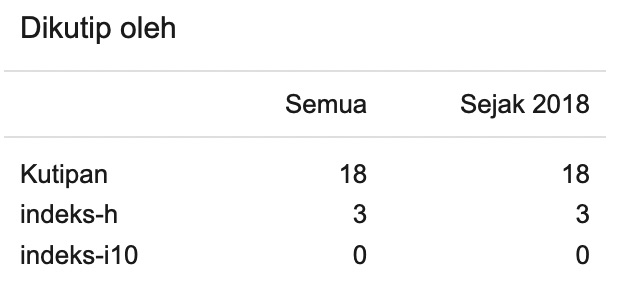Pelatihan Pemahaman Implementasi Teori Euclidean Distance dalam Metode K-Nearest Neighbour (K-NN) untuk Komputasi Cerdas bagi Siswa SMA
Abstract
SMA Muhammadiyah 8 Cerme is a senior high school with grades X, XI, and XII which have majors in Natural Sciences and Social Sciences. Based on the results of interviews conducted by the Community Service Team (PKM) Informatics Engineering Study Program, Muhammadiyah University of Gresik, to the Muhammadiyah 8 Cerme High School, information was obtained that the school was trying to apply the independent learning curriculum to its students and they had never been introduced to the implementation of mathematical formulas in computer science. especially intelligent computing theory. The target of this PKM activity is students majoring in science class XI as many as 55 people. The method that will be used for this PKM activity is socialization and training on the importance of studying mathematics, especially the two-point distance formula or the Euclidean Distance theory and its application in Intelligent Computing using the K-Nearest Neighbor(K-NN) Classification that is a part of Data Mining. PKM activities last 2 hours 30 minutes and divided by 3 sessions. The first session is filled with socialization and manualization of the Euclidean Distance, then the second session is the implementation of K-NN in Intelligent Computing, then the last session, namely session 3, is filling in the post test to find out students' understanding of the material that has been presented. Based on the results of the post test, it shows that students understand the Euclidean distance theory and its application to intelligent computing using the KNN algorithm, as evidenced by the highest point for the post test that has been answered correctly, which is 96.3%.
References
Imandoush, S. B., & Bolandraftar, M. (2013). Application of K-Nearest Neighbor (KNN) Approach for Predicting Economic Events: Theoretical Background. International Journal of Engineering Research and Applications, 605-610.
Kumar, B. A., Jairam, R., Arkatkar, S. R., & Vanajakshi, L. (2019). Real time bus travel time prediction using k-NN classifier. The International Journal of Transportation Research, 11(7), 362-372.
Maleki, N., Zaenali, Y., & Niaki, S. T. (2021). A k-NN method for lung cancer prognosis with the use of a genetic algorithm for feature selection. Expert Systems with Applications, 162.
Nada, L. Q. (2020). StudiI Kepustakaan: Contextual Teaching and Learning (CTL) untuk Meningkatkan Pemahaman Konsep Matematika Siswa di Era Merdeka Belajar. Konferensi Ilmiah Pendidikan Universitas Pekalongan. Pekalongan.
Nurmayanti Alifia, B. R. (2020). PREDIKSI FINANCIAL DISTRESS PERUSAHAAN PERTAMBANGAN BATUBARA DI BURSA EFEK INDONESIA MENGGUNAKAN SUPPORT. Jurnal Mitra Manajemen, 967-978.
Rasjid, Z. E., & Setiawan, R. (2017). Performance Comparison and Optimization of Text Document Classification using k-NN and Naïve Bayes Classification Techniques. Procedia Computer Science, 116, 107-112.
Widayati, E. W. (2022). Pembelajaran Matematika di Era “Merdeka Belajar”, Suatu Tantangan bagi Guru Matematika. Sepeen: Journal of Mathematics Education and Applied, 4(1), 1-10.
Xing, W., & Bei, Y. (2020). Medical Health Big Data Classification Based on KNN Classification Algorithm. IEEE Access, 28808-28819.






